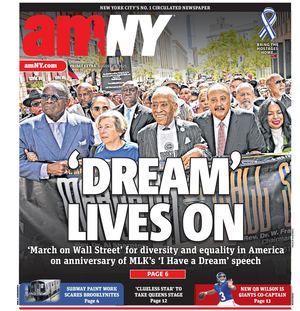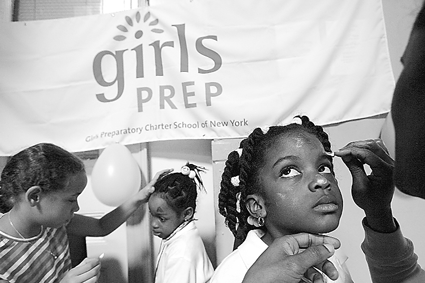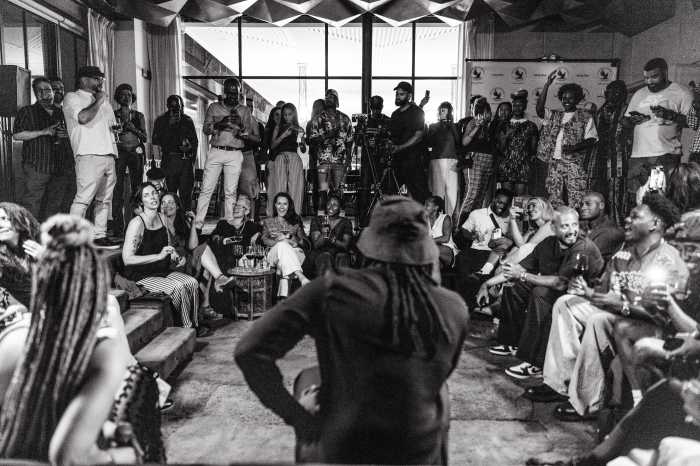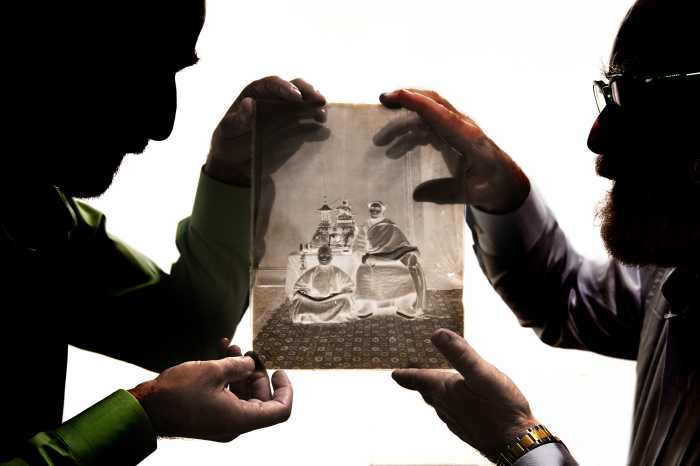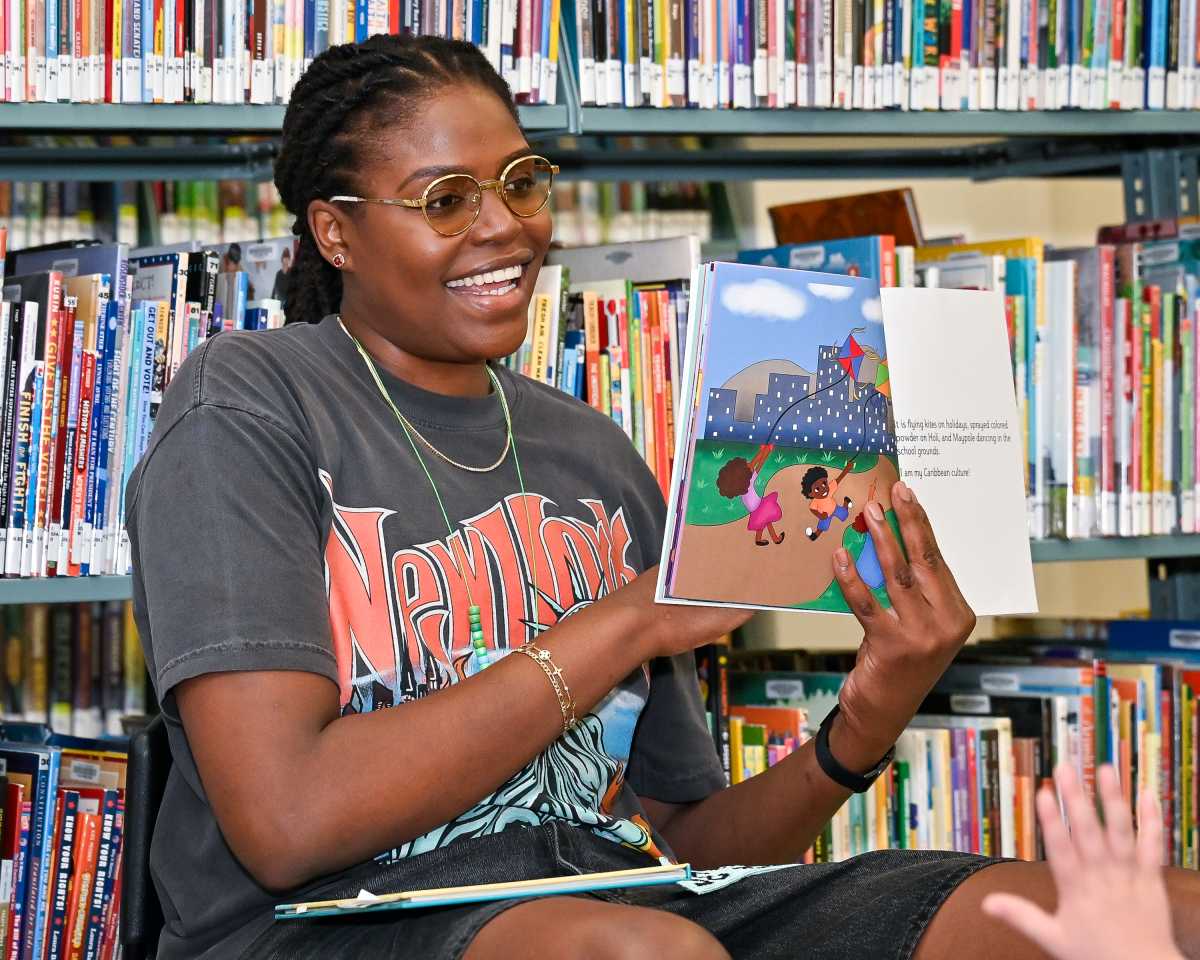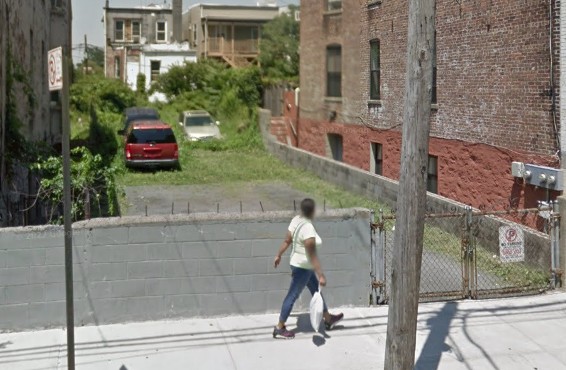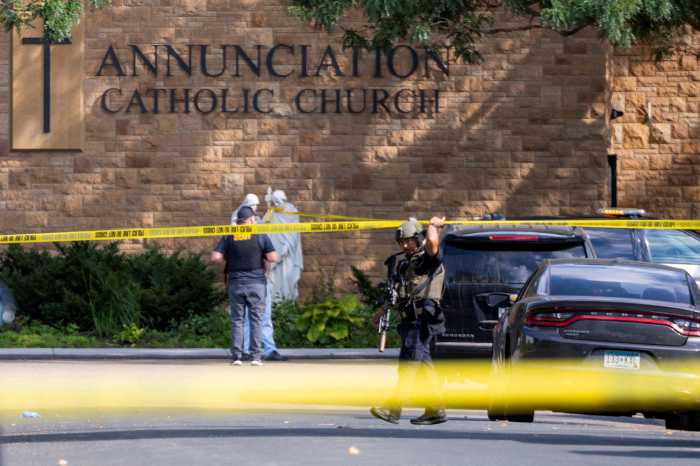By Steven Snyder
Two new East Village schools, opening their doors for the first time this fall, have found a way around the city’s limited budget for arts programs: importing arts teachers from a nearby music school.
|That music school is the Third Street Music School Settlement at 235 E. 11th St., and thanks to Third Street’s Music Instruction on the Lower East Side (MILES) program, students at both the Girls Preparatory Charter School of New York and the Technology, Arts and Sciences Studios School will enjoy an arts education that is becoming increasingly difficult for public schools to afford.
Founded in 1894, Third Street specializes in offering private lessons in music, dance and theater for more than 1,500 elementary, middle and high school students each year. It also offers specialized preschool, summer and adult programs.
Since 1980, however, the music school has reached out to the surrounding community, aiding schools in need by providing a subsidized arts curriculum and a visiting team of experienced arts faculty.
Nancy Morgan, Third Street’s deputy director and the head of the MILES program, said that last year the program provided arts instruction for 15 schools and 1,972 students, 91 percent of them minority children.
She said the total budget for this year’s program is $400,000, and that schools and parent associations pay 33 percent of the total amount. The remainder of the cost is divided between corporate, foundation and government grants, as well as donations from yet-unknown donors and support from Third Street itself.
Morgan said both the Girls Preparatory Charter School of New York and the Technology, Arts and Sciences Studios School approached Third Street for its assistance “on the basis of recommendations from other principals and teachers.” She also said there are some schools each year that Third School must turn away due to a lack of resources and faculty.
Two striking examples underscore the needs of area communities for stronger arts programs and the dramatic benefits that can result from an increased focus on arts instruction.
When the Bank Street Head Start program found itself short on funds and unable to continue in the MILES program that Third Street Associate Director Mary Lou Francis said went “very well,” parents themselves raised the money needed to continue the partnership. In one case, Francis said, concerned parents in an impoverished area raised $1,500 through operating daily lemonade stands.
And at P.S. 188, the flagship school for the MILES program, Morgan said she has worked closely with Principal Barbara Slatin over the past six years to develop a music and dance program that now reaches every student at the school.
During this time, the school’s academic performance has made significant gains. Morgan said that while only 16 percent of the school’s fifth graders passed the state reading test in 1999, that number increased to 50 percent last year, and she said Slatin has attributed this progress in large part to Third Street, saying that art is at the heart of her school’s improved discipline and learning environment.
Ironically, Francis said it is often standardized tests that prevent schools from focusing more on the arts. “They don’t have the money or the time [for the arts],” she said. “It’s all about the tests, teaching only for the tests.”
For some students involved in the MILES program, the education goes beyond these classroom visits.
Each year, a select few public school students are identified by visiting Third Street instructors as promising musicians and artists, and invited to visit and enroll in lessons at the school on an individual and small group basis. Francis said many of these talented children and teenagers remain involved in the school for years after their MILES experience has ended, and in some cases they even go on to pursue arts degrees in college that can be traced back to their introduction to Third Street.
“It’s so amazing what they can do,” Francis said. “These are the kids we need to be supporting and every kid deserves a chance to find out what he or she can do.”
This year, the city’s Project Arts program will provide $67.5 million to city schools to encourage arts instruction. This breaks down to $57.77 in arts funding per student for the 2005-2006 academic year, according to Dr. Sharon Dunn, senior instructional manager for arts education at the Department of Education’s Office of the Arts and Special Projects.
As the city’s per-student arts funding has decreased over the years, it has not been more calls from local schools, but fewer, that has concerned Francis.
“When I first came, I used to get calls from teachers all the time about talented students,” she said. But now she believes that with fewer personnel, less schools are identifying students with artistic talent.
Christina Anselmo, a former Third School student and a current school employee, said the institution changed her life.
Brought to Third Street as a teenager after her brother started lessons, Anselmo said her instruction was subsidized by the school, since her parents could not afford the costs of private lessons. Subsequently, she went on to major in music as an undergraduate in college, and enrolled both her children at Third Street.
“I am what I am today as a product of what Third Street gave me,” Anselmo said. “It’s the whole feel of the school — not only what my children are learning, and what I learned, but the teachers and parents and kids they meet.”
As the school and the MILES program continue to grow each year, Francis said Third Street needs more space if it is to accommodate additional students and faculty.
However, she said she would be happier to see the city’s arts funding for schools increase, and the community needs for Third Street decline.
“I would be so happy if we were out of business,” Francis said, “because it would mean everyone had a music teacher and that opportunity without us. Just think about that.”
